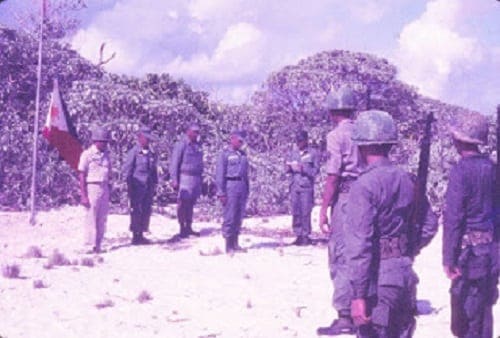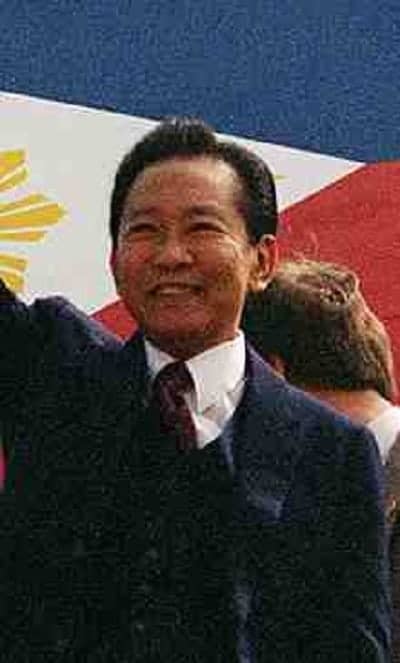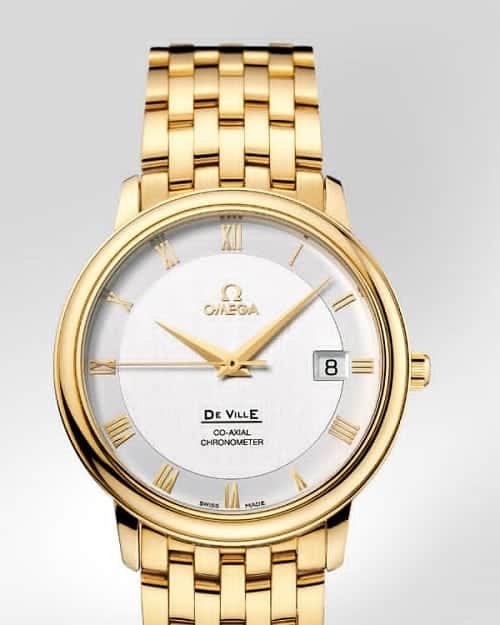Ferdinand Marcos was one heck of a controversial president. He’s extremely polarizing, and only few in the history of presidency could match him in that aspect.
But here’s a disclaimer: I’m neither a pro- or anti-Marcos. The goal is to provide unbiased information as opposed to exaggerated claims that have led some clueless Filipinos–especially the young ones–to make hasty conclusions.
Some say he’s the best president the country ever had, while others believe otherwise. But how well do we really know the Philippines’ strongman? Is he really the evil dictator that the media claim he was?
Here are 13 facts about former President Ferdinand Marcos that young Filipinos ought to know:
1. He was baptized into the Aglipayan Church.

Happy family: From left to right are Pacifico E. Marcos, Josefa Gustilio Edralin Marcos (matriarch), Elizabeth Marcos, Mariano Marcos y Rubio (patriarch), and Ferdinand E. Marcos. The youngest child, Fortuna, was not yet born when this photo was taken. Source: Old Manila Facebook Page
Born on September 11, 1917 in Sarrat, Ilocos Norte, Ferdinand Marcos was baptized into the Aglipayan or Philippine Independent Church.
The church was founded in 1902 by Isabelo de los Reyes and a Roman Catholic priest named Gregorio Aglipay who also became its first Supreme Bishop.
Members of this church reject the spiritual authority of the Pope as well as the doctrine of the Trinity. They also denied the existence of angels, devils, miracles, and other supernatural manifestations.
2. He changed religion in order to marry Imelda in a Catholic church.
When Marcos first met Imelda Romualdez in 1954, it was love at first sight. So after only two weeks of courtship, the couple tied the knot first in a civil ceremony in Baguio City followed by a church wedding at the
Pro Cathedral of San Miguel in Manila.
Pro Cathedral of San Miguel in Manila.
To make this possible, Imelda had to convince Ferdinand to convert from his nativeAglipayan religion to Roman Catholicism. She succeeded in persuading the latter, and the church wedding was held afterwards with President Ramon Magsaysay as the principal sponsor.
3. He was a memory whiz.
Marcos was so smart he single-handedly topped the 1939 Bar Examinations (with near-perfect score) despite being in jail for 27 days!
Perhaps we can blame it on his photographic memory which allegedly gave him the ability to memorize complicated texts such as the the 1935 Philippine Constitution and recite them forward and backward.
Several people can attest to Marcos’ incredible memory, and they include Senator Miriam Defensor-Santiago who once served as the late president’s speech writer.
“One time, the Secretary of Justice forgot to tell me that the President had requested him to draft a speech….” said Miriam during an interview with the Philippine Star.
“And then, on the day the President was to deliver the speech, he suddenly remembered because Malacañang was asking for the speech, so he said, ‘This is an emergency. You just have to produce something.’
…He (Marcos) liked long speeches. I think that was 20 or 25 pages. And then, in the evening, I was there, of course. President Marcos recited the speech from memory.”
4. His achievements as a president can fill a book, and so are his crimes.
President Ferdinand Marcos’ dream of building a new society had brought forth several projects that have benefited us in the long run.
During his third SONA in 1968, Marcos claimed that the country became self-sufficient in rice and corn, therefore solving the chronic food shortage.
Fast forward to 1980 and the Marcos administration reached yet another milestone: The country’s gross national product (GNP) dramatically climbed from 39.5 billion pesos in 1965 to an outstanding 86.7 billion pesos in 1979, which translates to 6.6% growth rate a year.
And this was only the tip of the iceberg.
From Sept. 21, 1972 up to Feb. 26, 1986, Marcos was able to craft and formulate a total of 7,883 presidential decrees and other 5 legal issuances. All of the country’s specialty hospitals were also built during his term and these include the Kidney Center, Philippine Children Center, Philippine Heart Center, and the Lung Center of the Philippines.
Marcos’ accomplishments are too many to mention, and have since become the benchmark by which the performances of his successors are based upon.
But we also have to deal with the other side of the coin. As much as we want to admire Marcos, there are just facts that prove he’s as imperfect as those who came before and after him.
According to the Akbayan party-list group, the Marcos administration was responsible for 35,000 torture cases, 70,000 incarcerations, and 3,257 murders. He was also blamed for the arrest of more than 50,000 people including the “desaparecidos” or those who were victims of enforced disappearances.
It should also be noted that the value of the peso also dropped from P1 = US$ 1 to P25 = US$ 1 during Marcos’ term. And from just $360 million in 1962, our country’s debt reached a staggering P28.3 billion by the time Marcos left his office in 1986.
5. He wanted Ninoy to be his successor.
No thanks to the media, the general consensus now is that President Ferdinand Marcos ordered the assassination of Sen. Benigno “Ninoy” Aquino Jr.
But that claim is truly unfounded, and people should believe Marcos is innocent until a strong evidence prove otherwise.
In the first place, both Marcos and Ninoy were loyal members of the Upsilon Sigma Phi fraternity. Yes, Marcos hated Ninoy as his political nemesis but he also admired the latter for his undying principles.
Heck, Marcos even looked up to Ninoy as his potential successor.
In a special report published in the Philippine Daily Inquirer, it was revealed that Marcos considered Ninoy as the best prepared to be president among the politicians during that era. Some theorists also believe that “Marcos may have already considered Aquino as a potential successor even before he allowed the Tarlac politician to have an open heart surgery in the United States on May 8, 1980.”
Ex-Master Sgt. Pablo Martinez, one of those who were convicted of murder, confessed that Ninoy was indeed chosen by Marcos to be his successor. The president’s decision reportedly irked some of his allies, and so plans to assassinate Ninoy were made afterwards.
The same report also discusses an alleged covenant between Marcos and Ninoy. A travel companion of Aquino in the U.S. said that the covenant included “the position of prime minister in the National Assembly, provided that Aquino won a seat in the 1984 elections.”
6. Martial Law was communism’s biggest recruiter.
For Marcos, the August 1971 Plaza Miranda bombing (which the regime blamed on the communists) was a clear sign of using democracy to destroy democracy itself. To eliminate communist threats, he suspended the privilege of the Writ of Habeas Corpus and later declared martial law.
Ironically, the martial law eventually became communism’s biggest recruiter. From the 1,028 armed regulars in 1972, members of the New People’s Army (NPA) had ballooned to 22,500 by 1986.
7. His war exploits are questionable.

Major Ferdinand E. Marcos in 1946 wearing three medals awarded by the United States: The Distinguished Service Cross, Silver Star and Purple Heart. Source: Presidential Museum and Library’s Official Tumblr Page.
Marcos claimed he was the hero of the Battle of Bessang Pass during WWII, earning a total of 33 medals and awards throughout his career. However, his opponents believe otherwise.
Bonifacio Gillego, a military officer who resisted martial law, exposed that 11 of the 33 medals were given 20 years after the war when Marcos was already a Senate President gearing up for a presidential campaign. Eight of these awards, on the other hand, were actually campaign ribbons given to all participants “in the defense of Bataan and in the resistance.”
Regarding his war exploits, the U.S. army found no official documents that could prove Marcos led “Ang Maharlika”, a guerilla force composed of 8,200 men. In the end, they declared Marcos’ claims to be ”fraudulent” and ”absurd.”
So where the heck was Ferdinand Marcos during the Japanese occupation?
He said he was freed by the Japanese on August 4, 1942. But according to a Japanese document discovered by John Sharkey of the Washington Post, prisoners released at that time were either too sick or “whose families have cooperated with the Japanese military authorities.”
Marcos was not included in the list of ailing prisoners published by The Manila Tribune. We should also remember that his father, Mariano Marcos, was one of those who welcomed the Japanese with open arms and was later executed by anti-Japanese guerillas in 1945.
Marcos also claimed that he was hiding at the Philippine General Hospital from June to August, 1943. During the same period, President Laurel, leader of the Japanese puppet state, was also staying in the Japanese-controlled hospital. Go figure.
8. The ‘Omega 12′ was behind Marcos’ Martial Law.
The martial law was not a one-man endeavor. In fact, Marcos sought the help of his ’12 apostles’, later known as the “Rolex 12″ (named after the Rolex watches that Marcos gave to them as gifts).
But according to a 1974 confidential memo of then US Ambassador to Manila William Sullivan, Marcos gave the 12 military officers gold Omega watches, not Rolexes. Hence, the proper term would be “Omega 12.”
Before declaring the martial law in 1972, Marcos consulted with the Omega 12, and their plans were contained in a confidential document called Oplan Sagittarius. Five members of the Omega 12, according to Tomas Diaz, even helped create the decrees of Proclamation 1081 before all 12 of them finalized Marcos’ plan.
The following are the official members of the “Omega 12″:
- Defense Minister Juan Ponce Enrile,
- Philippine Constabulary chief Maj. Gen. Fidel V. Ramos,
- National Intelligence Security Authority chief Maj. Gen. Fabian Ver,
- Lt. Col. Eduardo “Danding” Cojuangco, Jr.
- Army chief Maj. Gen. Rafael Zagala,
- Constabulary vice-chief Brig Gen. Tomas Diaz,
- Armed Forces Chief of Staff Gen. Romeo Espino,
- Air Force chief Maj. Gen. Jose Rancudo,
- Navy chief Rear Admiral Hilario Ruiz,
- ISAFP chief Brig. Gen. Ignacio Paz,
- Metrocom chief Brig Gen. Alfredo Montoya, and
- Rizal province Constabulary head Col. Romeo Gatan.
9. Marcos and the Yamashita treasure.
It was Emperor Hirohito’s brother, Prince Chichibu, who led the “Golden Lily” campaign and plundered Asian territories. Chichibu’s cousin, Prince Tsuneyoshi Takeda, was then assigned to hide the loot at hundreds of secret vaults within the Philippines. He also gave a copy of the maps to his Filipino servant for safekeeping.
Now let’s go back to President Marcos.
For some reason, he was able to get a copy of the treasure maps, and soon ordered his military officers to undertake a treasure hunt. And then came Rogelio Roxas, a Filipino treasure hunter who uncovered in a Baguio City tunnel thousands of gold bars and an 8-inch tall gold Buddha filled with real diamonds and precious stones.
It didn’t take long before the news reached President Marcos. He immediately sent his men to confiscate the treasure and had Roxas arrested and tortured.
When Cory Aquino became the president, she formed the now abolished Presidential Commission on Good Government (PCGG) to initiate the hunt for the missing Marcos Loot. As we all know, PCGG only recovered $5 billion (in the form of cash and other assets) out of the alleged $100 billion loot.
Imelda Marcos, on the other hand, claimed that her husband deposited a very large sum in a bank in Brussels, Belgium. This is because the amount of the fortune was so large “it would be embarrassing.”
10. He bought the Kalayaan Island in Spratlys for 1 peso.

LtJG Domingo Tucay reading proclamation at the Kalayaaan Islands in Spratlys. Source: bonginvirginia.blogspot.com
Philippines’ claim over the Spratlys started when Tomas Cloma landed at its biggest island in 1956. A seafaring adventurer and owner of a fishing business, Cloma made a “Proclamation to the whole world” that a new state called “The Free Territory of Freedomland” was created. He asserted sovereignty over the area although no country formally recognized his claims.
Cloma, who was also the founder of the Philippine Maritime Institute, was later jailed during the martial law for the fraudulent use of the “admiral” title (his drinking buddies at the National Press Club called him “Admiral”).
He was released after he surrendered all his claims to the islands to Marcos for only one peso. Afterwards, Marcos officially transformed the biggest island (“Pag-Asa Island”) into a fortification, the first and probably the last time that our country was able to add a new territory.
11. He launched the first Philippine-made rocket.
Yes, you heard that right: A rocket made in the Philippines. Launched in Caballo Island (near Corregidor), the rocket was part of “Project Santa Barbara” which was participated by a group of scientists and the Philippine Navy.
Since December 1972, a series of 37 dynamic tests were conducted on the 180 MM rocket. The project, initiated by President Marcos, also involved testing of other weapons and armaments.
On September 1975, four “bongbong” rockets (named after Marcos’ son, obviously) were successfully launched. Asked about why the country was experimenting in making its own ballistic missiles, President Marcos explained:
“The defense of the Philippines cannot be left to alliance with other countries. We must assume that there will be contingencies where even the United States may not be ready to come to our assistance.”
12. He knew that the U.S. secretly stored nuclear weapons in the country, but never told anyone.
This is according to a document released by the National Security Archive based in George Washington University.
The said top-secret memo was from US career diplomat Robert McClintock. He informed then acting secretary of the US State Department that the storage of nuclear weapons “would be covered by executive privilege and not divulged to the Symington Subcommittee on overseas commitments.”
The memo also suggests that the nuclear weapons have been stored in the country for many years “without prior consultation with the Philippine Government.”
The document added: “The fact that President Marcos was secretly informed of the presence of these weapons in 1966 would not work to his advantage in the elections. The Philippine government and public are not aware of storage nor of President Marcos’ knowldege thereof.”
13. People worship him like a GOD.
Unlike most Filipinos who vilify the late dictator, a group of peasants in Ilocos Norte and in the mountains of Abra province worship Ferdinand Marcos like a saint.
In fact, they gather every month in their own chapel dressed in white flowing robes to worship the long-dead Marcos. Inside the chapel, they face an altar where the picture of the sacred heart of Jesus is displayed–with Jesus Christ’s face replaced by that of Marcos.
For the cult members, Marcos didn’t steal but “simply kept the fortune they accused him of stealing.” They also added that “time will come when all the money will be recovered and used for the development of our country.”
According to cult leader Rodolfo Cabusao, their group started as a member of the Rizalian Brotherhood which have long believed that Rizal was Christ’s reincarnation. They began worshipping Marcos when the strongman died in 1989, the same year when Cabusao claimed that Marcos appeared in his dream and proclaimed himself as God’s disciple.
Source: http://www.filipiknow.net/









No comments:
Post a Comment